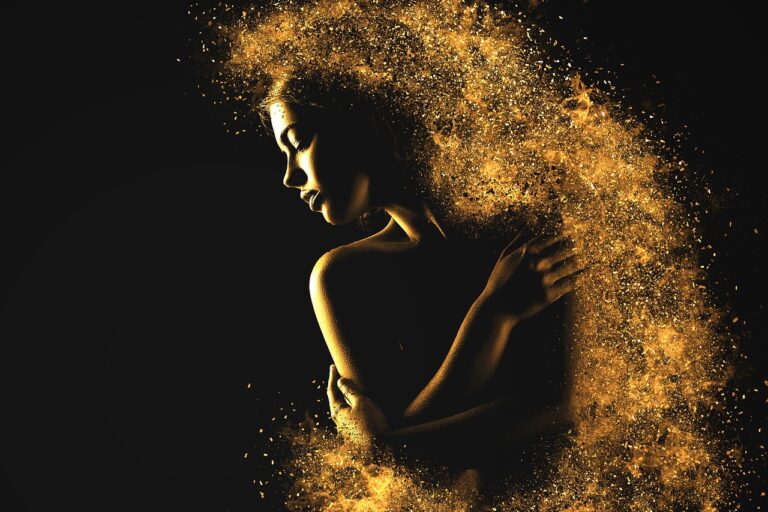One popular rationale for separating art and pornography is that art is necessarily multi-layered, whereas pornography is a simple call to sexual acts. But this is a dubious claim (see, for example, Cooke 2012 and Eaton 2012).
Moreover, a substantial number of philosophers, such as Roger Scruton and Jerrold Levinson, deny that there can be pornographic art. We will explore their arguments in this article.
What is erotic art?
Clearly, the term ‘erotic’ does not automatically imply sexual explicitness, and it is important to remember that erotic art can also include works that are explicitly religious, political, or satirical. It can also encompass paintings, sculptures, and other media that aim to capture feelings rather than particular bodily parts. For example, although Titian’s Venus of Urbino is frequently cited as a work of erotic art, it does not feature any sexual organs and focuses primarily on the face, as a window to the soul.
It is often argued that the main difference between art and pornography is that pornographic works are designed primarily to elicit sexually explicit responses from the viewer. However, this claim has a number of problems. For one, it overlooks the fact that many works of art have been deliberately designed to elicit sexually implicit responses. For instance, the shunga woodblock prints that were popular in Japan at the end of the Ming Dynasty featured scenes of sexual intercourse and masturbation.
Moreover, it is also a problematic assumption to assume that pornographic works have a single purpose and a single audience. For example, some erotic art – such as Joan Semmel’s figurative paintings of women – was deliberately designed to challenge the voyeuristic assumptions of pornography and other types of sex industry imagery. Further, some philosophers – notably, Georges Bataille (1985, 1986) – have argued that norm-breaking is central to sexual arousal.
What is erotica?
Erotica is any form of art that deals with stimulating or sexually arousing subject matter. This can include painting, sculpture, drama film, music and literature. It has spawned a variety of subgenres including gay, lesbian, women’s, bondage and tentacle erotica. Erotica can also be contrasted with pornography, which is defined as explicit depictions of sex or sexual acts.
While sex scenes are important to many erotic stories, it is not always the case that romance is an intrinsic part of this genre. Often, the sex is more of a pivot point in character growth or relationship development than a means to a happy ever after. This is not to say that erotica can’t be romantic, just that it should not be expected to be.
Sadly, new readers who pick up a book with “erotica” on the cover may be confused about what it is that they are getting into. This is especially true if the book appears to be exclusively focused on sex or has graphic descriptions of sexual activity. As a writer, you can help clarify this confusion by defining what it is that makes your story erotic and establishing how much weight this element has in the plot. For example, Mooning writes fantasy with a heavy dose of eroticism but her books would not be classified as erotica because the sex is not the main point of the plot.
What is erotica for?
When writing erotica, the goal is to create arousal through anticipation, evocation, and action. While it includes explicit sex and sexually related content, high-quality erotica also features emotional and character development that builds the anticipation of what will happen next. Unlike pornography, which lacks artistic pretense, erotica strives to be believable and emotionally satisfying.
It can include fetishes such as bondage, dominance, submission, and sadomasochism. It may also incorporate different forms of sexual pleasure, including oral, labia, anal, and vaginal. It can be written for a single gender or between men and women. It can be set in any time period, or take place in different locales, such as the bathroom, bed, or kitchen. It can even involve a supernatural setting.
As a writer, it’s best to pick one subgenre and become proficient at it before trying out others. This will help you learn reader expectations and gain a following. Plus, you can focus on a particular fetish and avoid cliches. If you write erotica for a large audience, it’s important to have some consistency with your genre to keep readers coming back for more.
What is erotic art for today?
The question about whether art can be erotic has been the focus of intense and polarizing debates. In the past, the main obstacle has been that the term erotic implies a connection with pornography, and pornographic art is not protected by the Constitution as free speech. This has prompted some philosophers to argue that a work can’t be erotic unless it violates societal or moral norms about sexuality. This argument, which is based on the idea that eliciting the emotions of arousal, pleasure and fascination is the purpose of art, has been criticized by feminist philosophers who argue that it is a narrow view of what makes something beautiful (for an anti-feminist rebuttal, see Newall 2012).
Other philosophers have argued that it is possible for works to be erotic while not violating societal or moral norms. They point out that a significant portion of Western art, from the Isenheim Altarpiece and Liberty Leading the People to Japanese woodblock prints called shunga, depicts overtly erotic subjects such as nudity and sex.
They also note that the earliest surviving examples of sex art date back to Paleolithic cave paintings and sculptures. Thus, erotic art has a long history and it can be found in almost every visual media, including sketches, engravings, movies, erotic paintings, sculptural art, and photography. However, it is important to make clear that not all images of naked bodies or sexual behavior are erotic and that there is a distinction between erotic art and pornography. Pornography consists of scenes of sexual intercourse and is not considered fine art.
See Also:


